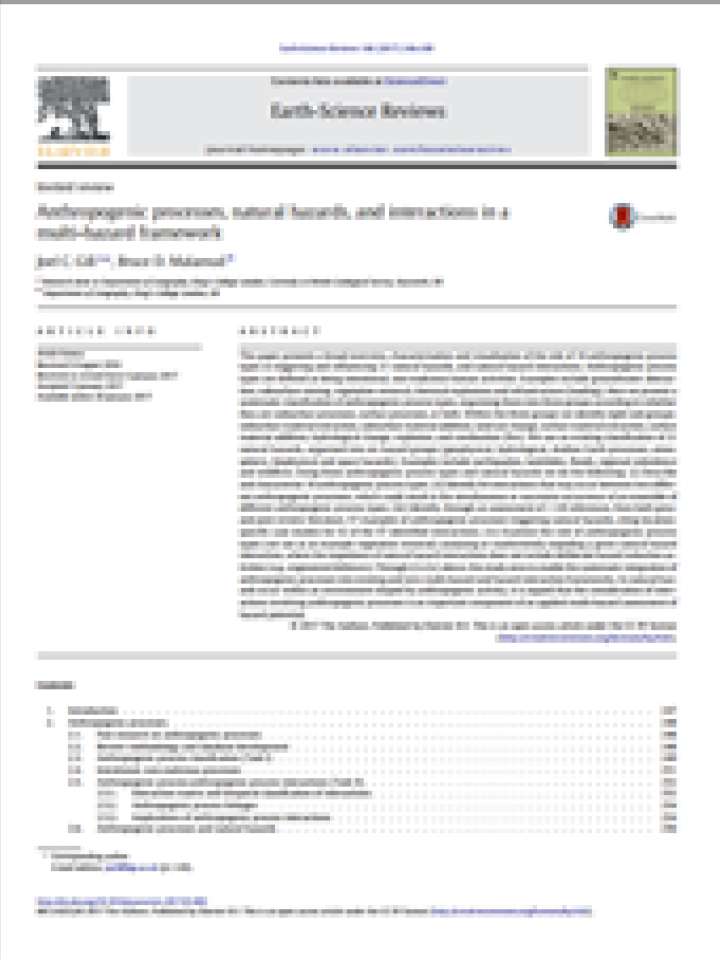Anthropogenic processes, natural hazards, and interactions in a multi-hazard framework
This paper presents a broad overview, characterisation and visualisation of the role of 18 anthropogenic process types in triggering and influencing 21 natural hazards, and natural hazard interactions. Anthropogenic process types are defined as being intentional, non-malicious human activities. Examples include groundwater abstraction, subsurface mining, vegetation removal, chemical explosions and infrastructure (loading).
Using anthropogenic process types and natural hazards, this research:
- Describes and characterises 18 anthropogenic process types;
- Identifies 64 interactions that may occur between two different anthropogenic processes, which could result in the simultaneous or successive occurrence of an ensemble of different anthropogenic process types;
- Identifies 57 examples of anthropogenic processes triggering natural hazards, citing location-specific case studies for 52 of the 57 identified interactions;
- Examines the role of anthropogenic process types (ex. vegetation removal) catalysing or inadvertently impeding a given natural hazard interaction, where the impedance of natural hazard interactions does not include deliberate hazard reduction activities (e.g., engineered defences).
This study enables the systematic integration of anthropogenic processes into existing and new multi-hazard and hazard interaction frameworks. As natural hazards occur within an environment shaped by anthropogenic activity, it is argued that the consideration of interactions involving anthropogenic processes is an important component of an applied multi-hazard assessment of hazard potential.
Earth-Science Reviews 166 (2017) 246–269. This document shared under a Creative Commons License (CC BY 4.0).
Explore further
